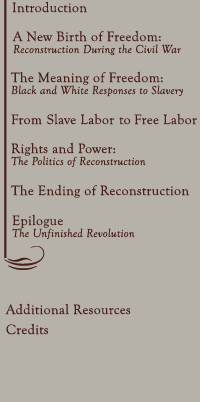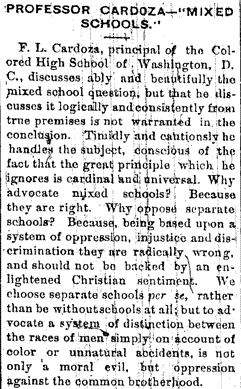




Biographical
Sidebar:
Francis L. Cardozo
The son of
a prominent Jewish businessman of Charleston and his free black wife,
Francis L. Cardozo (1837-1903) played a leading role in promoting black
education in the city.
After graduating in 1861 from the University of Glasgow in Scotland, he
moved to Connecticut, where he served as a Congregationalist minister.
Cardozo returned
to Charleston in 1865 as a teacher for the American Missionary Association,
and soon was appointed to direct the Association's educational activities
in the city.
In 1866, he was instrumental in the establishment of Avery Normal Institute,
and became its first superintendent. The school trained black teachers,
"the object," Cardozo wrote, "for which I left all the
superior advantages and privileges of the North and came South."
![]() Learn
more about the Avery Institute
Learn
more about the Avery Institute

Cleveland Gazette, July 10, 1886